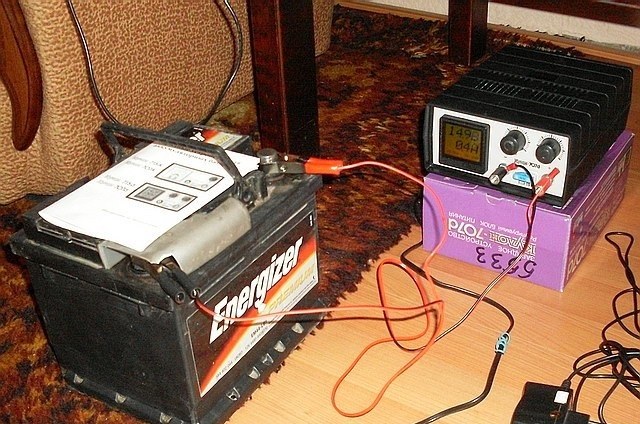Battery
The battery is primarily required to operate the vehicle's starter motor and, accordingly, the engine start-up. In addition, it is designed to provide electrical energy for various automotive customers at the idle motor. In turn when the engine is running the alternator charges the battery.
The reasons for the discharge
Everything seems to banal is simple, but many factors contribute to the discharging of the battery and on some of them, many motorists simply do not pay enough attention. But even if the motor is idling, long enabled consumers energy and adversely affect its charge. In this case, this can be attributed to auto connect to other consumers not covered by the standard package and the circuit in the mains.
The quality of the battery is also affected by the faulty electrical equipment, which decreases the charging voltage from the generator, long-term Parking is connected with the negative terminal (ten days).
Types of batteries
If the battery is low order "reanimation" of action will be slightly different depending on which type is installed on the car. Batteries are divided into serviceable, low-maintenance and maintenance-free. The first option is extremely rare, so we will not focus on it. Low maintenance, batteries require periodic topping up of distilled water, and maintenance-free designed so that water flow in them is reduced to a minimum and they don't have special holes for such an operation.
Check the voltage at the terminals of the battery
The only thing that allowed the original to do with any type of battery is to test the voltage loading plug, a multimeter or voltmeter. The voltage at the terminals of the battery with a full charge should be 12,6-12,9 V. Smaller figures indicate the discharge.
Check electrolyte level and density
In the presence of maloorlivka battery car owner should check the electrolyte level, density and if necessary add distilled water.
What is an electrolyte? It is a mixture of sulfuric acid and distilled water. The process of water evaporation cannot be prevented, and this happens most intensely in the hot summer weather. On some types of batteries have labels for the minimum and maximum, but if there are no reference points, you should check that the electrolyte completely covers the plates of the battery. In addition, it reduced the density often indicates the discharging of the battery.
To check the density of electrolyte must be such a simple tool like a hydrometer. It is a glass flask with pear and float. Density is checked in all banks of batteries, then make the appropriate conclusions. Normal readings should be from 1.25 to 1.29 g/cm3. To increase the density of the electrolyte is added only distilled water.
Some batteries have special charging indicator, it gives readings just on the basis of the density of the electrolyte, which simplifies the task. If it's green then charging is not required, black – low battery, white – unloaded or inoperable.
Charging the battery
The results of all the performed operations, it is possible to proceed to the immediate charging of the battery. This will require a special charger. As a rule, it is not difficult to use and completely automatic. Only not to forget to take a number of measures to correct the charging. Namely, to remove the terminals and to open the neck.
The first connects the plus terminal of the charger, then the negative. And only after that the device included in the network. When charging is complete, disconnect in the reverse order.
Remember that when charging the battery stands out a combustible mixture of oxygen and hydrogen, so in any case it is impossible to place the battery near sources of fire. The room must be well ventilated.
With maintenance-free batteries, the situation is somewhat different. They are technologically different from the slightly-maintenanced not only those that do not have fillers, but also the internal device. Some, like low-functioning due to liquid electrolyte, in some it is contained in non-woven polypropylene, and in the other it is mixed with powder of silicon oxide and is a gel.
Charge maintenance-free batteries should be with great care, strictly following the instructions. If possible, the charger current can be set in the range of 10 % of the capacity in Ah. At full battery power is better to use only 1.5-2 A, since a rapid release of gases is fraught with serious consequences.
